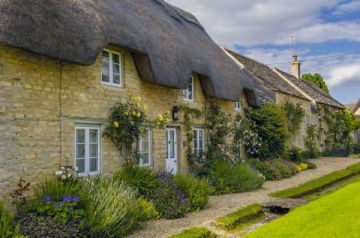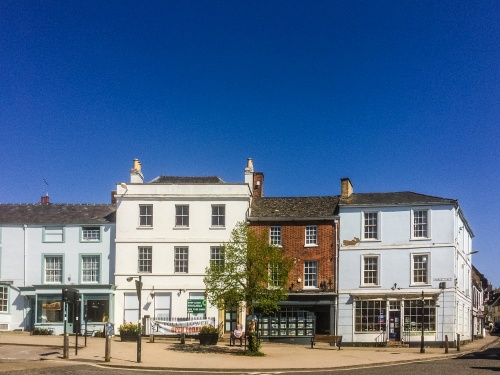
Faringdon is an attractive Oxfordshire market town between the River Thames and the Vale of White Horse about 10 miles north-east of Swindon. The tow was recorded in the Domesday Book of 1086 and gained a market charter in 1218. The town name may derive from the Old English term for a fern-covered hill.
History
Faringdon dates to at least the Saxon era, when it was in a border region between Mercia and Wessex. It seems likely that there was a West Saxon royal palace here, though no trace now remains. The famous episode of King Alfred the Great burning the griddle-cakes is said to have taken place at Faringdon, though Athelney in Somerset seems a more likely location.
It is also possible that Alfred the Great's successor Edward the elder died at Faringdon (though Farndon-on-Dee in Shropshire also claims the honour).
We know that there was a minster church at Faringdon by the late Saxon period. That church stood on the north side of the market place, where the present parish church of All Saints now stands.
In 1144 Robert, Earl of Gloucester fortified Faringdon Hill, to the east of the town, in support of his half-sister Empress Matilda, who was engaged in a fierce conflict with King Stephen for the crown. The king's army attacked and Empress Matilda was forced to flee in the dead of night, still dressed in her nightclothes. By 1190 the town was a royal manor, and in 1203 King John granted the estate to Beaulieu Abbey in Hampshire. The abbot of Beaulieu held the manor of Faringdon until the Reformation.
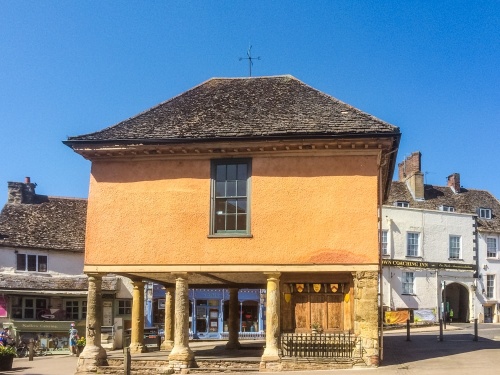
Great Coxwell Barn
One reminder of the monks' presence at Faringdon is the superb medieval tithe barn at Great Coxwell, just west of Faringdon. The barn is huge, measuring 144 feet long and 38 feet wide, with an internal capacity of over 5000 square feet. William Morris called Great Coxwell Barn the most impressive building in England, and he may be right.
We mentioned the market charter, granted in 1218. The charter gave Faringdon the right to hold a weekly market, a right that is still observed every Tuesday over 800 years later. In 1227 the valuable right to hold an annual fair was granted.
At Radcot, just north of Faringdon, is the site of a brief but important conflict in 1387 when The Lords Appellant met a Royalist force under Robert De Vere, Earl of Oxford. The Royalists were routed and the Earl had to throw off his armour and swim to safety across the River Thames.
Several medieval buildings remain around the market square, though most of them are hidden behind later facades. One of these medieval buildings is the Crown Hotel, a 14th-century courtyard building behind a Georgian frontage.
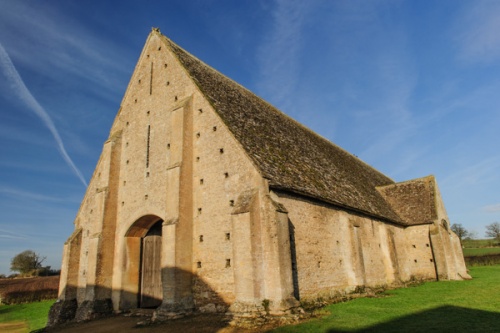
Faringdon suffered badly during the Civil War. The town was occupied by Royalist supporters of King Charles I, but Oliver Cromwell's men set up cannons on Folly Hill and bombarded the town. Tradition says that the Parliamentarians were aiming for the steeple of All Saints Church, hoping to make it collapse onto the Royalist position.
Shortly after the Restoration of the Monarchy Faringdon gained its most iconic building, the distinctive Old Market Hall. The hall has an arcaded ground floor with space for merchants to set up stalls, while stairs lead to an upper chamber where the business of governing the town took place.
The local manor house is Faringdon House, for many years the home of the Pye family. One of the Pyes was Henry Pye, who served as Poet Laureate from 1790 until 1813. He was, by all accounts, the worst Poet Laureate in history, but he did perform one useful task; every day he walked from Faringdon House to the top of Folly Hill where he planted a Scots pine seedling. The Scots pine was a symbol of Jacobite support so it is possible he was making a political statement.
Faringdon Folly
Whatever the reason, a beautiful plantation now crowns the top of the hill. In the midst of the plantation is Faringdon Folly, possibly the last true folly built in England. It was erected in 1935 by Lord Berners as a birthday gift to his companion. The Folly stands 10 feet high and has an observation platform at the top. On a clear day, you can get fabulous views over five counties from the top of the Tower.
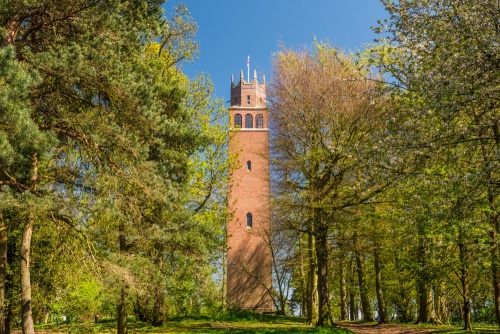
All Saints Church
We've already mentioned Faringdon's attractive medieval parish church of All Saints, which stands on the site of the earlier Saxon minster. The church is full of fascinating monuments, many to the Pye family of Faringdon House and to the Unton family. There are several late medieval memorial brasses in the chancel, and in the north transept is the alabaster tomb of Sir Thomas Unton (d. 1533) and his wife. Look for the alabaster effigy of an unknown woman in Elizabethan costume, thought to be Lady Dorothy Unton.
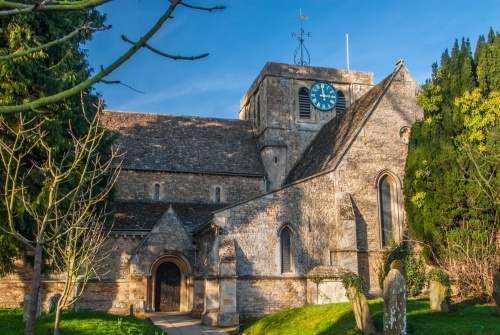
Kelmscott Manor
Just three miles from Faringdon is William Morris' home of Kelmscott Manor. The manor house dates to the 16th century but it is most famous for its links to Morris, the artist, designer and driving force behind the Arts and Crafts Movement. Morris came to Kelmscott in 1871 and used it as a country retreat for the remaining 25 years of his life. Many of the rooms at Kelmscott have been preserved exactly as they were during Morris' lifetime. Morris is buried in St George's Church, a short stroll from the manor house.
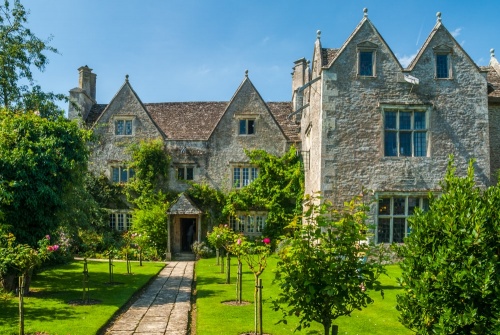
Buscot Park
Kelmscott Manor is a quiet country escape, but nearby Buscot Park is an opulent country house, a late 18th-century stately home set in superb landscaped gardens. The house was built in 1779 by Edward Loveden, known as 'Old Father Thames' for his work in improving navigation on the River Thames. Buscot Park is stunning; the interiors are filled with fine art, including paintings by Reynolds, Rubens, and Rembrandt.
About Faringdon
Address: A417,
Faringdon,
Oxfordshire,
England
Attraction Type: Town
Location: At the junction of the A417 and A420. Large town centre parking area - free for two hours as of this writing.
Website: Faringdon
Location map
OS: SU288956
Photo Credit: David Ross and Britain Express
HERITAGE
 We've 'tagged' this attraction information to help you find related historic attractions and learn more about major time periods mentioned.
We've 'tagged' this attraction information to help you find related historic attractions and learn more about major time periods mentioned.
Find other attractions tagged with:
NEARBY HISTORIC ATTRACTIONS
Heritage Rated from 1- 5 (low to exceptional) on historic interest
Faringdon, All Saints Church - 0.1 miles (Historic Church) ![]()
Faringdon Folly - 0.6 miles (Historic Building) ![]()
Great Coxwell Barn - 1.6 miles (Historic Building) ![]()
Badbury Clump - 1.8 miles (Prehistoric Site) ![]()
Great Coxwell, St Giles Church - 1.8 miles (Historic Church) ![]()
Shellingford, St Faith's Church - 2.3 miles (Historic Church) ![]()
Farmer Gows - 2.8 miles (Family Attraction) ![]()
Kelmscott Manor - 3.2 miles (Historic Building) ![]()



